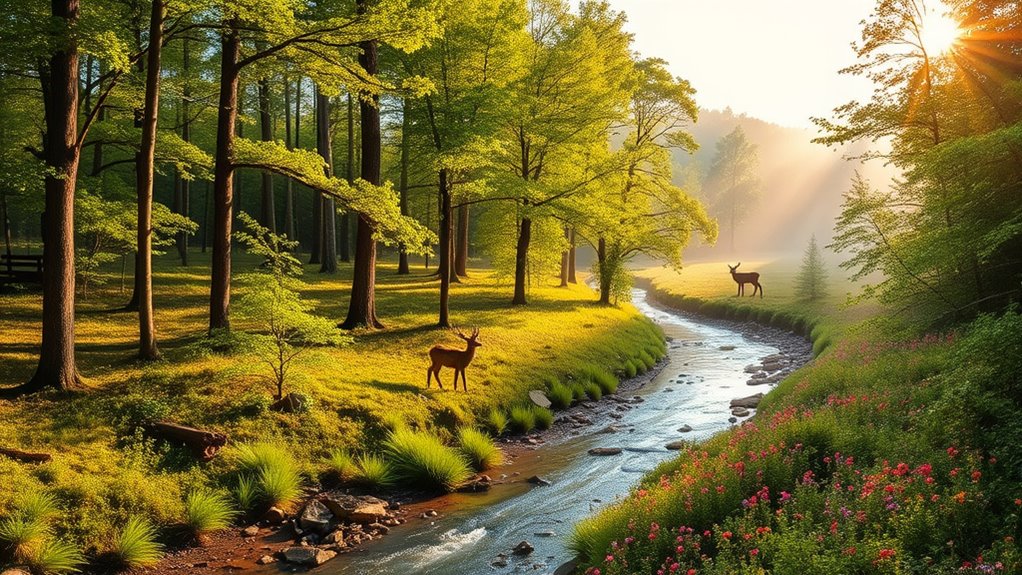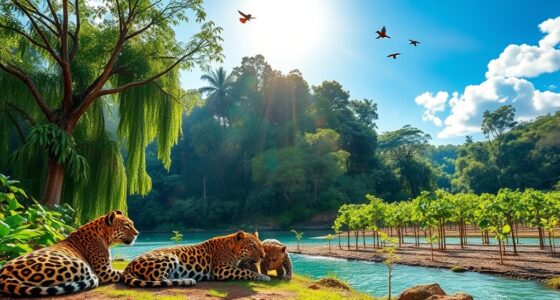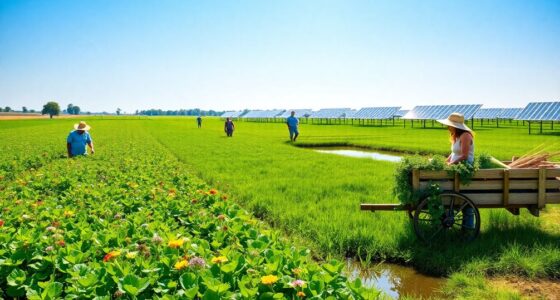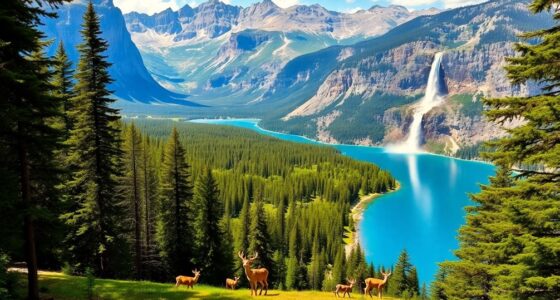Protected areas play a vital role in conservation by safeguarding biodiversity and ensuring the long-term health of ecosystems. They offer crucial ecosystem services, support sustainable economies, and help mitigate climate change. By reducing habitat loss and engaging local communities, these protected spaces foster a strong sense of ownership over natural resources. Each area contributes to job creation and economic diversity while preserving cultural heritage. You’ll discover more about their challenges and future opportunities ahead.
Key Takeaways
- Protected areas preserve ecosystems and biodiversity, covering approximately 17% of the world’s land and contributing significantly to global conservation efforts.
- They provide essential ecosystem services, such as climate regulation and carbon storage, enhancing ecosystem stability and resource health.
- Economic benefits stem from tourism, generating local income and promoting sustainable livelihoods through diverse economic activities.
- Engaging local communities in conservation fosters ownership, cultural heritage preservation, and improves the well-being of residents.
- Protected areas face challenges like climate change and funding shortages, necessitating effective management tools and stakeholder involvement for successful governance.
Definition and Importance of Protected Areas
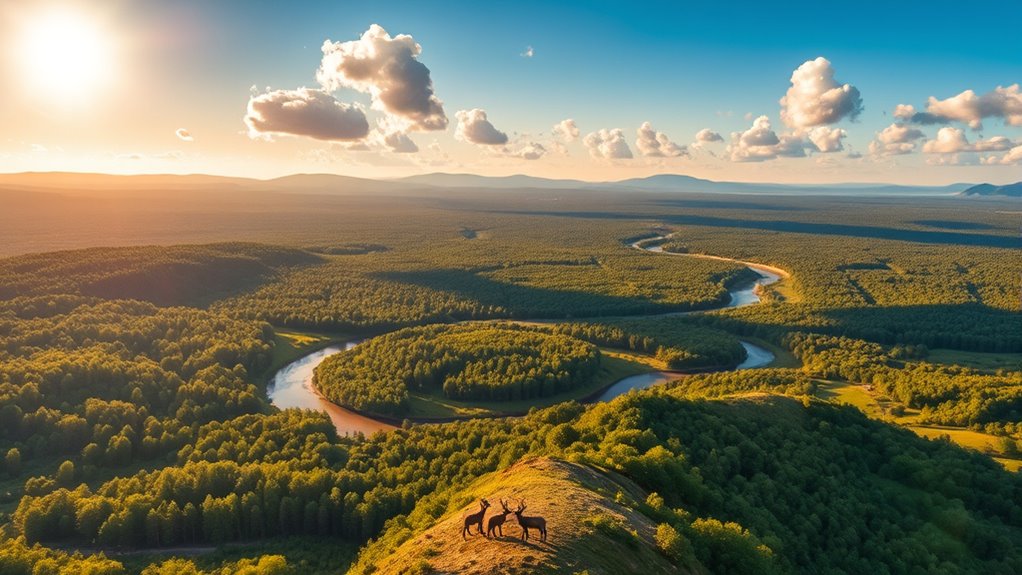
Protected areas play a crucial role in conserving nature and its benefits, as they’re designated spaces that ensure the long-term preservation of ecosystems and cultural values.
Defined by the IUCN, these areas are managed through legal frameworks, involving various stakeholders like government agencies, indigenous peoples, and local communities. Covering about 17% of the world’s land area, they also include around 14,688 marine protected areas. As of December 2022, a goal of 30% by 2030 has been set to enhance the protection of these areas. The importance of these areas is further emphasized by their ability to support sustainable living practices, which promote biodiversity and health. Healthy ecosystems provide essential services such as clean air and water, illustrating why protecting these areas is vital. Additionally, advance directives can help in planning for the sustainable management of these areas and ensuring that ecological and cultural values are preserved for future generations.
Their importance lies in providing essential ecosystem services—clean air, water, and supporting livelihoods through tourism. Additionally, they hold cultural significance, conserving sacred sites and traditions.
Biodiversity Conservation Benefits of Protected Areas

While many people may not realize it, protected areas are essential for enhancing biodiversity, which directly impacts human well-being. These areas harbor significant biological richness, supporting diverse species and providing critical habitats for threatened wildlife, ultimately reducing extinction risks. Approximately 55.8% of global Key Biodiversity Areas (KBAs) are covered by protected spaces, which help maintain ecosystem stability and quality. They also store carbon in forests and peatlands, aiding climate regulation while supporting water provision and food security. Furthermore, protected areas play a significant role in ecosystem stability, ensuring the long-term health of our planet’s natural resources. Emotional support during conservation efforts can foster a deeper connection to these vital ecosystems. Additionally, the establishment of protected areas contributes to sustainable practices, promoting responsible resource management and conservation efforts. Moreover, solar energy solutions can enhance the sustainability of protected areas by reducing the carbon footprint of nearby human activities.
Protected areas ensure clean air and water, protecting the genetic diversity crucial for future discoveries. By preserving these ecosystems, you contribute to a healthier planet and a more sustainable future for both nature and humanity.
Economic Advantages of Protected Areas
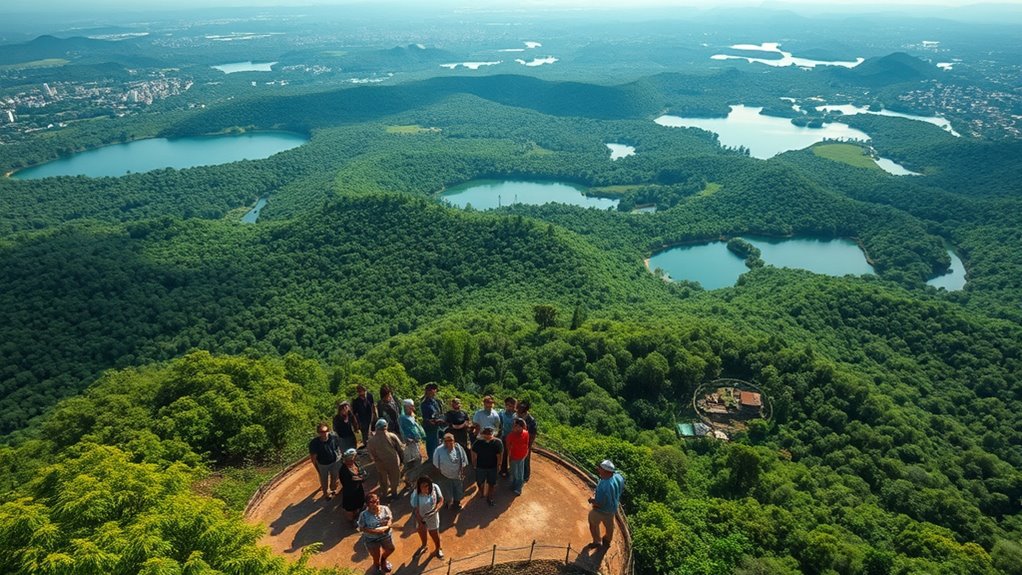
When you consider the role of protected areas in our economy, you’ll find they offer substantial economic advantages that extend beyond conservation. For every dollar you invest in these areas, you can expect a return of at least six times that amount, mainly through sustainable tourism. This not only boosts local economies but also creates numerous jobs in tourism-related services. Additionally, investing in real estate can provide long-term financial benefits for those involved in these areas.
Protected areas generate revenue through park entry fees and spending on local accommodations and food, contributing significantly to local governments. Additionally, they diversify economies, reducing reliance on single industries. Each dollar spent by tourists increases local incomes by over one dollar, further emphasizing the positive economic impact of these areas. Furthermore, luxury travel experiences in these regions often attract high-spending visitors, which can lead to even greater economic benefits for local communities. Moreover, the growing demand for transparency in sustainable practices enhances the reputation of protected areas, attracting even more investment and tourism.
With effective management, the economic impact of these areas can enhance national GDP, supporting broader economic recovery efforts while benefiting communities involved in nature-based tourism.
Social Benefits and Community Involvement
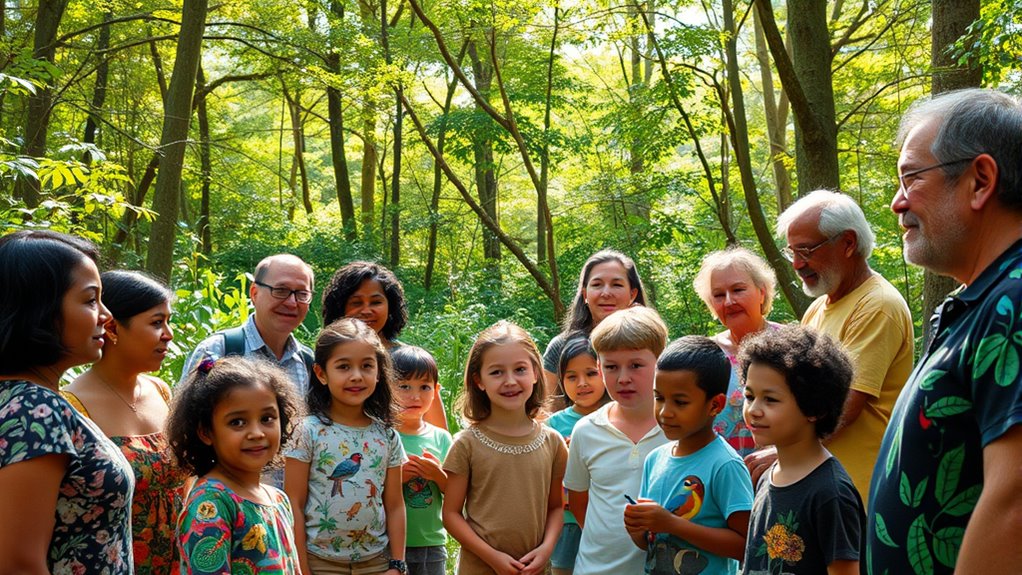
The social benefits of conservation areas extend far beyond mere ecological preservation, as they actively engage local communities in meaningful ways. By involving locals in conservation efforts, you foster a sense of ownership that enhances the success of these areas.
Protected zones contribute to multidimensional wellbeing, impacting material, relational, and subjective aspects of life. They also promote sustainable livelihoods through tourism and entrepreneurial initiatives, reducing poverty and creating jobs. Additionally, protected areas can drive social and economic development, ensuring that local communities thrive alongside their natural environment. The integration of home improvement strategies can further enhance these efforts by creating spaces that are conducive to community engagement. Furthermore, these areas can promote pet therapy programs, which may improve emotional wellbeing and reduce feelings of isolation among community members. Incorporating accessible design in community spaces can further encourage participation and inclusivity.
Protected zones enhance wellbeing and foster sustainable livelihoods, empowering communities while reducing poverty and creating job opportunities.
Moreover, these areas preserve cultural heritage, providing a sense of place and meaning. Effective governance ensures that local rights are respected, allowing communities to benefit equitably.
When properly managed, protected areas not only safeguard natural resources but also empower communities, promoting a harmonious coexistence with nature.
Challenges Facing Protected Areas
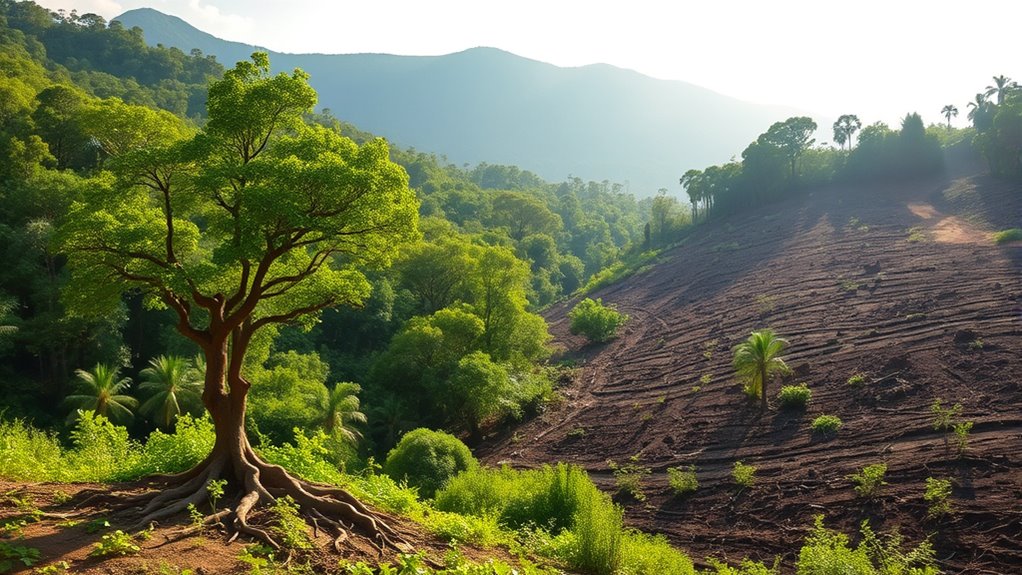
Protected areas play a vital role in enhancing community wellbeing, but they also face significant challenges that threaten their effectiveness. Human encroachment, including agriculture and infrastructure projects, puts immense pressure on these areas, leading to habitat loss and fragmentation. Climate change exacerbates this issue, forcing species to shift beyond protected borders. Additionally, funding shortages and resource mismanagement hinder proper conservation efforts, while corruption can further derail initiatives. Governance challenges, such as PADDD, create legal loopholes that allow for degradation. Lastly, limited scientific knowledge and monitoring capabilities prevent informed decision-making. To protect biodiversity, it’s crucial to address these challenges head-on and ensure that protected areas can fulfill their essential role in conservation, as 15% of Earth’s surface is designated as protected areas, highlighting their global importance. Furthermore, inadequate management of these areas can lead to poor installation practices of conservation strategies that fail to address the unique needs of different ecosystems. The need for diversification across sectors in conservation efforts is essential to mitigate risks and enhance overall effectiveness. Moreover, the exploration of abstract art in public spaces can serve as a medium to raise awareness about conservation challenges and engage the community in meaningful dialogue.
Tools for Effective Management of Protected Areas

To effectively manage protected areas, utilizing a variety of tools is essential for enhancing conservation efforts. Tools like the Management Effectiveness Tracking Tool (METT) and the Integrated Management Effectiveness Tool (IMET) help you assess and track management effectiveness. Engaging stakeholders in participatory assessments can strengthen governance and decision-making processes. Data collection and analysis tools allow for informed decisions, while capacity-building components enhance the skills of managers. The Integrated Management Effectiveness Tool (IMET) promotes standardized practices, ensuring effective and equitable management. These tools are adaptable for different ecosystems and regional needs, enabling you to address unique challenges. Additionally, incorporating cybersecurity measures is crucial to protect sensitive data related to conservation efforts. Understanding the importance of effective communication strategies can further enhance collaboration among stakeholders involved in conservation initiatives. Furthermore, utilizing portable solar panels can provide sustainable energy solutions for managing conservation sites in remote locations.
Role of Protected Areas in Climate Change Mitigation

Effective management of protected areas not only enhances conservation outcomes but also plays a significant role in climate change mitigation.
By acting as carbon sinks, these areas store significant amounts of CO2 and help preserve soil carbon, preventing its release into the atmosphere. They reduce emissions by preventing the conversion of natural habitats, thereby maximizing their carbon storage capacity. Additionally, these ecosystems act as carbon sinks, further contributing to the reduction of greenhouse gas concentrations in the atmosphere. Furthermore, proper insulation upgrades in surrounding areas can enhance the overall effectiveness of these carbon storage systems. Moreover, renewable energy technologies implemented within or around these protected areas can further bolster their capacity to mitigate climate change. For example, renewable energy sources like solar power can be harnessed to reduce the reliance on fossil fuels in these regions.
Protected areas also provide essential ecosystem services, enhancing resilience against climate change impacts and reducing local vulnerabilities to extreme weather.
Protected areas enhance resilience to climate change and mitigate local vulnerabilities to extreme weather events.
Recognizing these zones as nature-based climate solutions, you can see their potential to sequester billions of tons of CO2.
Ultimately, establishing and managing these areas is crucial for both climate action and biodiversity conservation.
Sustainable Tourism and Local Community Support
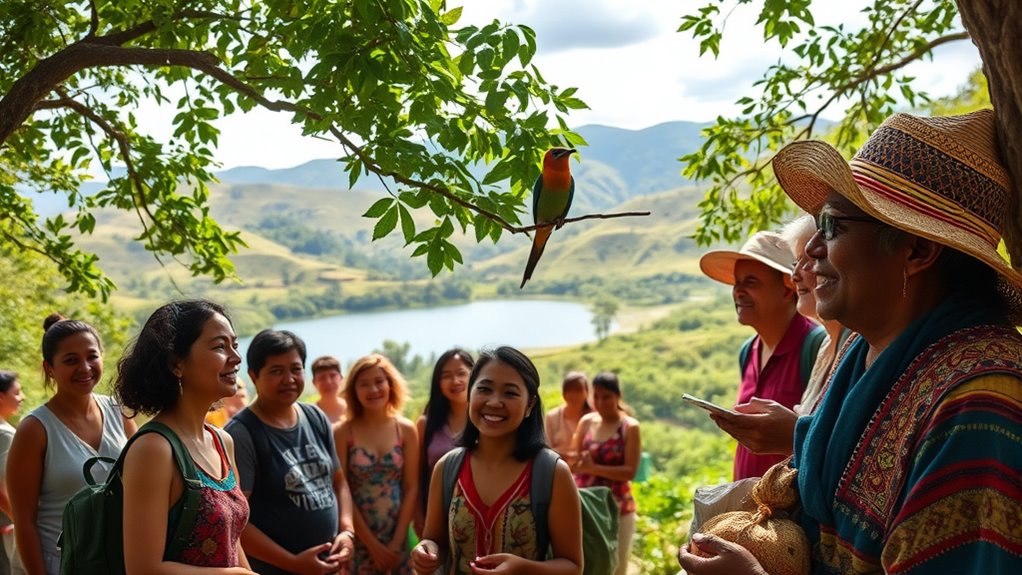
While exploring sustainable tourism, you’ll find that it not only benefits local communities but also plays a vital role in conserving natural ecosystems.
By creating jobs and stimulating economic growth, tourism provides significant income for local households and businesses. This influx of revenue encourages investments in conservation, ensuring protected areas receive the support they need. For every dollar invested in protected areas, the economic rate of return is at least six times the original investment, further highlighting the importance of sustainable tourism.
Engaging local communities in tourism planning enhances their involvement and empowers them to participate in conservation efforts. Furthermore, sustainable tourism fosters awareness of environmental preservation and helps preserve cultural heritage.
Through activities like hiking and wildlife viewing, protected areas offer unique experiences that benefit both tourists and locals, creating a sustainable cycle of economic and environmental support.
Engaging Stakeholders in Protected Area Governance

Sustainable tourism naturally leads to deeper engagement with local communities, paving the way for collaborative governance in protected areas.
By involving various stakeholders—governments, civil society, private sectors, and the public—you create a robust governance framework. Engaging local communities also builds personal and community resilience, which is essential for sustainable management. Additionally, fostering cultural intelligence among stakeholders can enhance understanding and cooperation in governance efforts.
Participatory planning is essential, allowing for resource mobilization and shared decision-making. You can adopt both formal processes and ad-hoc workshops, ensuring vertical and horizontal engagement across different levels.
Participatory planning fosters resource mobilization and shared decision-making, ensuring engagement across all levels of governance.
Co-management arrangements clarify responsibilities and foster inclusive governance.
While challenges like cost, equitable participation, and legal rights exist, addressing them enhances the effectiveness of management plans. Additionally, robust stakeholder participation is essential for governance and conservation, ensuring that all voices are heard in the decision-making process.
Ultimately, engaging stakeholders not only supports conservation efforts but also strengthens community backing, ensuring the long-term sustainability of protected areas.
Future Directions for Protected Area Conservation
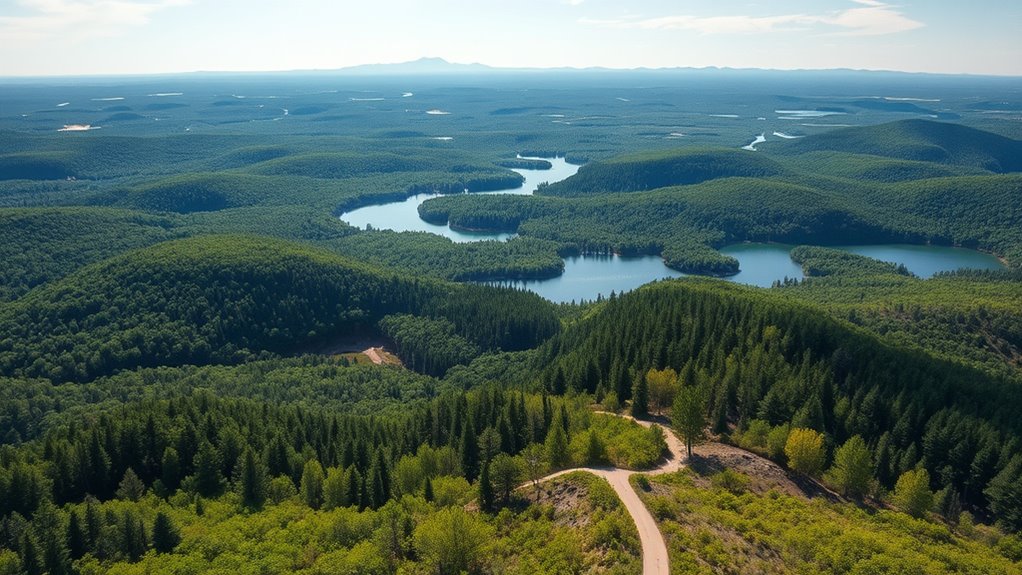
As climate change reshapes ecosystems and species distributions, the future of protected area conservation hinges on adaptive management strategies. You’ll need to prioritize climate change adaptation, ensuring ecological connectivity to support species migration. Balancing conservation with local economic needs is crucial, preventing human disturbance leakage effects. Systematic monitoring of biodiversity changes will help you assess conservation effectiveness and adjust strategies accordingly. Integrating sustainable development can yield economic benefits through tourism while promoting human well-being. Engaging local communities in management enhances conservation outcomes. Additionally, local stakeholder involvement is essential for ensuring that conservation efforts align with the needs and priorities of the communities that depend on these ecosystems. Embrace innovative management strategies, utilizing technology and flexible plans. Collaborate globally to meet biodiversity targets and foster research partnerships. Finally, focus on reducing human disturbances and protecting carbon-rich ecosystems to combat climate change effectively.
Frequently Asked Questions
How Do Protected Areas Affect Local Wildlife Populations?
Protected areas significantly influence local wildlife populations by providing safe habitats essential for their survival.
You’ll find that these areas help maintain biodiversity, offering food and shelter while enabling breeding.
However, human activities in surrounding zones can disrupt wildlife movement, impacting their behaviors and ecosystem health.
When managed well, these protected spaces can enhance species resilience, ensuring a thriving environment for both wildlife and the local communities that depend on them.
What Role Do Indigenous Communities Play in Managing Protected Areas?
Indigenous communities play a vital role in managing protected areas by integrating traditional knowledge, advocating for sustainable practices, and fostering community engagement.
You’ll see them collaborating with conservation organizations, ensuring their voices are heard and their rights respected.
By participating in co-management agreements, they enhance biodiversity preservation and promote ecological health.
Their deep-rooted connection to the land not only enriches conservation efforts but also supports cultural heritage and resilience against climate change.
Can Protected Areas Help Reduce Urban Pollution?
Absolutely, protected areas can significantly reduce urban pollution.
By incorporating urban forests, they filter out harmful pollutants and improve air quality. You’ll notice that trees also lower temperatures, which can decrease energy usage in nearby buildings.
These areas not only serve as green lungs for cities but also educate the public on sustainable practices, promoting a cleaner environment.
Engaging with local communities enhances awareness and encourages actions that further reduce pollution levels.
How Are Protected Areas Funded and Maintained?
Protected areas are funded and maintained through diverse mechanisms, including government budget allocations, donor grants, and conservation trust funds.
You’ll find that taxes and environmental fees also contribute, ensuring sustainable financing.
Community engagement plays a vital role, driving eco-tourism and resource management efforts.
Monitoring and research enhance effectiveness, while innovative strategies like debt-for-nature swaps create additional opportunities.
Ultimately, these combined efforts help secure the future of protected areas for both nature and communities.
What Happens if a Protected Area Is Downgraded or Degazetted?
If a protected area’s downgraded or degazetted, you’ll likely see increased human activities that harm biodiversity and ecosystem health.
This can lead to deforestation, habitat fragmentation, and loss of vital ecosystem services, like clean water and carbon storage.
As resource extraction ramps up, you may notice a decline in species and overall biodiversity.
These changes can undermine conservation efforts and threaten the health of the environment we all depend on.
Conclusion
In the grand tapestry of nature, protected areas are the vibrant threads that weave biodiversity, economic prosperity, and community well-being into a cohesive whole. By safeguarding these precious landscapes, you’re not just preserving Earth’s treasures; you’re investing in a sustainable future for generations to come. Embracing the challenges ahead, you hold the power to transform these havens into thriving sanctuaries, where nature and humanity flourish side by side. Together, let’s nurture the roots of conservation for a brighter tomorrow.
